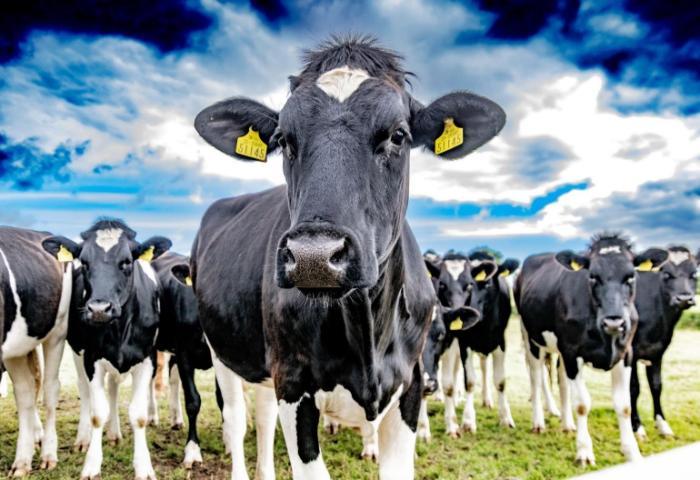Future-proofing incomes for the next generation

There are key opportunities within the farm gate which will sustain progress over the next decade. Padraig French, Teagasc Livestock Systems & Dairy Enterprise Leader, Conor Hogan, Teagasc Research Officer and Brendan Horan, Teagasc Research Officer, tell us more.
With a total estimated value of €7.4 billion in 2024, the recent performance of the sector has been achieved through a combination of increased average herd size per farm (from 75 to 96 cows per farm between 2017 and 2024) and increased productivity from improved animal breeding, grassland management and animal husbandry. Remarkably, the increase in total sector value has been achieved while reducing reliance on chemical nitrogen (N). At the core of this success story are over 16,000 family-owned dairy farms, producing over 8.5 billion litres of milk each year and supporting over 60,000 jobs across the rural economy.
While dairy family farm income volatility is now a significant feature, the average dairy farm income has increased by 240% since the pre-expansion period (2008-2010; €39,689 to 2022-2024; €95,689). This is indicative of strong economic return from investment in key technology developments over this period.
While the dairy industry faces significant challenges in terms of regulation, increasing international trade uncertainties and generational renewal, the current profitability of the sector has created the opportunity for family farms to continue to innovate and develop more sustainable farming systems while future-proofing the financial livelihoods for the next generation. There are key opportunities within the farm gate which will sustain progress over the next decade.
Individual dairy farms vary considerably in terms of characteristics such as family circumstances, enterprise mix, stage of development, soil types and farm system components. Nonetheless, all farms must plan to further develop and strengthen their farm businesses using available research innovations and technology.
Reduce feed costs and increasing feed self-sufficiency on the farm
The financial landscape for dairy production has been substantially altered during the past five years with unprecedented increases in costs. In addition to the ongoing requirement to improve efficiency to meet climate action commitments, dairy farmers must also refocus on cost reduction to maintain margins during 2025. To that end, high productivity pastures are the cornerstone of efficient grazing systems contributing to more than 80% of the feed requirements on dairy farms.
The medium term priority must be to increase profitability by increasing grazed pasture utilisation with high EBI cows, improving swards and matching stocking rate to grass growth potential. Such systems can be further improved by reducing reliance on increasingly expensive supplementary feed imports, incorporating clovers within grazing swards, and further refining day-to-day operations to reduce nutrient losses.
It is hugely challenging to maintain farm productivity and profitability while reducing chemical nitrogen (N) use. It requires the successful incorporation of a substantial legume component within grazed pastures.
Further investment in productive areas
On farms where cost control is well managed and above average profitability levels are being achieved, the priority should be to invest in facilities and technology that are proven to reduce workload and further improve the efficiency of the farm operation.
Foremost among these investments should be improvements in soil fertility and pasture quality which deliver rapid and substantial returns. The next priority should to improve roadway infrastructure and acquire highly effective labour saving technologies which reduce workload and free up time.
As dairy farming consistently provides the highest return of any farming enterprise, the long term focus should be to ensure that the farm will be attractive to successors and continue to operate as a pasture based milk production unit for future generations.
Taking advantage of additional growth opportunities
Farmers who aim to continue to grow a profitable business, should evaluate dairy expansion opportunities. This could be either by adding land to the existing milking platform or, where feasible, through the acquisition of an additional second grazing platform which can replicate the high levels of operational efficiency being achieved on the home farm. ,
As a group, Irish farmers are getting older. As farmers choose to exit the industry, lease and partnership agreements represent attractive opportunities for them to maintain income levels, while young entrants replacing them establish new dairy operations and grow their own dairy businesses.
Securing the farm’s future
With consistently high relative returns, milk production remains the most viable use of land for the majority of dairy farmers. For farmers thinking about stepping back, early planning is critical. Pathways to family partnerships should be explored first.
If such options are not available, collaborative models, such as share farming, can enable a gradual transition; maintaining income and involvement while creating a viable entry route for a young farmer.
These arrangements can help maintain investment and productivity within the farm, and support continued involvement by the current farmer. Succession should be viewed not as an endpoint but as part of a longer-term strategy that allows the business to evolve and grow under new leadership.
The skills that will shape future success
To realise these opportunities, the next phase of development must be underpinned by key skills and robust planning. Financial benchmarking and sound business planning will be essential to guide smart investments and navigate through volatility.
Equally, people management and leadership, including how work is organised and how people are supported, will determine the attractiveness of farms as workplaces.
Finally, developing strong networks through active participation in discussion groups will play a central role in knowledge-sharing and furthering growth. It is these core skills that will underpin the next phase of growth and innovation within the sector, allowing farmers to get continued value from their efforts, investments, and growth to-date.
This article was first published in Today’s Farm, read more from Today’s Farm here.
